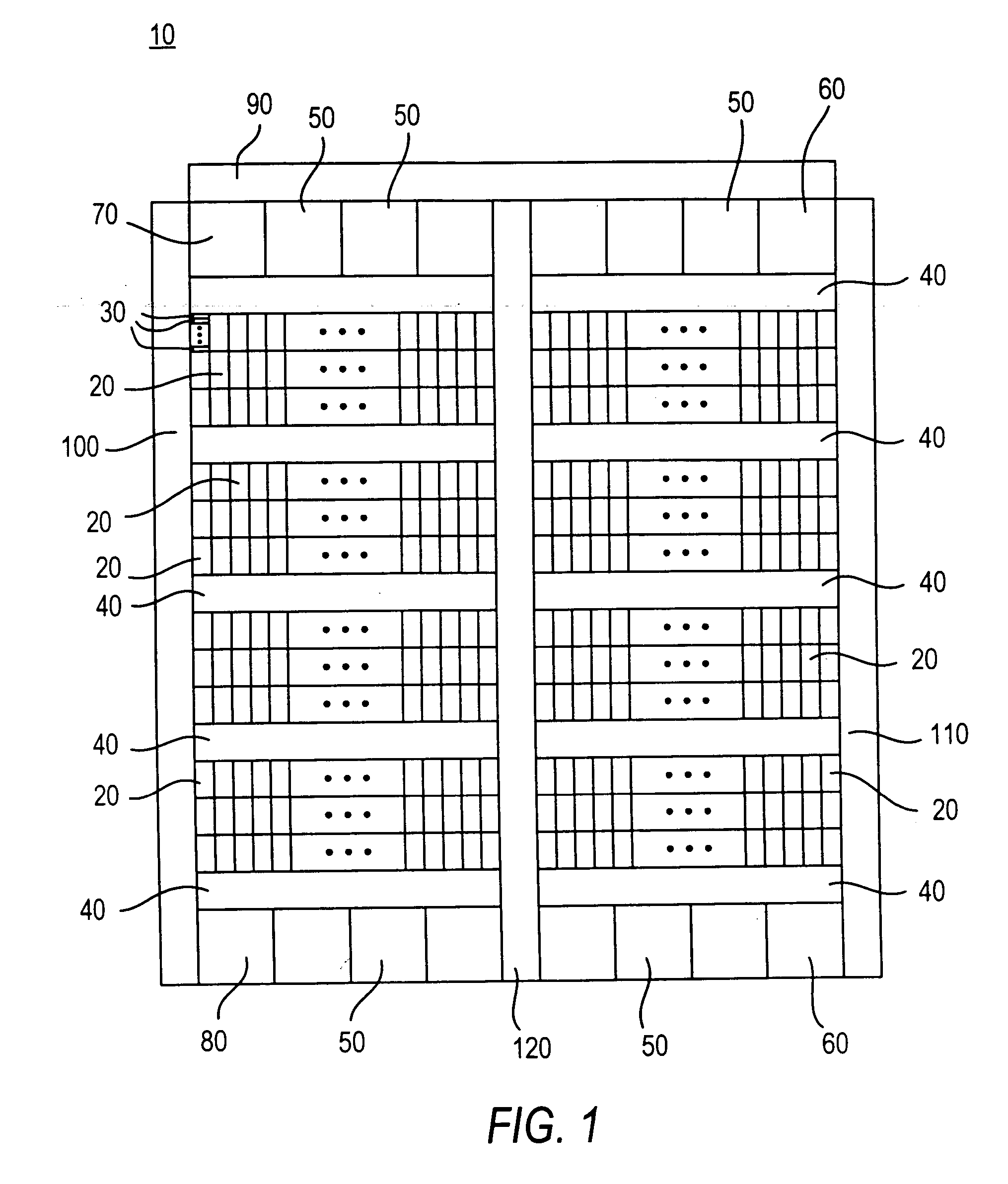Interconnection and input/output resources for programmable logic integrated circuit devices
a technology of integrated circuit devices and input/output resources, which is applied in the direction of computation using denominational number representation, pulse techniques, instruments, etc., can solve the problems of increasing the size of the die, increasing difficult to significantly further reduce the longest signal propagation time, so as to increase the speed of all the interconnection resources, double the speed at which the device can be clocked, and halve the propagation time of the signal
- Summary
- Abstract
- Description
- Claims
- Application Information
AI Technical Summary
Benefits of technology
Problems solved by technology
Method used
Image
Examples
Embodiment Construction
[0027] An illustrative programmable logic device 10, which can be constructed in accordance with this invention, is shown in FIG. 1. Device 10 includes 12 rows of regions 20 of programmable logic. Each row includes 40 regions 20. Thus regions 20 are disposed on device 10 in a two-dimensional array of 12 rows intersecting 40 columns of regions 20.
[0028] Each region 20 includes ten subregions 30 of programmable logic. To avoid over-complicating FIG. 1, the individual subregions 30 are delineated only in the extreme upper-left-hand region 20. As will explained more fully later in this specification, each subregion 30 is programmable by a user of device 10 to perform any of several relatively small logic functions. Extremely complex logic functions can be performed by concatenating subregions 30 via a programmable network of interconnection conductors and other associated interconnection resources on device 10.
[0029] Interspersed among the rows of regions 20 are five rows of input / out...
PUM
 Login to View More
Login to View More Abstract
Description
Claims
Application Information
 Login to View More
Login to View More - R&D
- Intellectual Property
- Life Sciences
- Materials
- Tech Scout
- Unparalleled Data Quality
- Higher Quality Content
- 60% Fewer Hallucinations
Browse by: Latest US Patents, China's latest patents, Technical Efficacy Thesaurus, Application Domain, Technology Topic, Popular Technical Reports.
© 2025 PatSnap. All rights reserved.Legal|Privacy policy|Modern Slavery Act Transparency Statement|Sitemap|About US| Contact US: help@patsnap.com



